Car body cover is a must either outdoors or indoors. Because it protects vehicles from harsh weather, dust, scratches, UV rays, and other damage. Many people are wondering:
5 common features of outdoor car cover materials
Materials for outdoor car covers should be durable enough to provide stronger protection against extreme sun, rain, and other harsh environments.
Waterproof property
Outdoor car covers need to have excellent waterproofing to protect vehicles from rain, snow, and even nasty hail. If the car cover isn’t good at keeping water out, especially in areas with lots of pollution, the rainwater can be pretty corrosive.
There are two ways car covers achieve waterproofing. One way is to use materials that are naturally waterproof, like PVC. The other way is to add a special coating to the cover’s surface, like a PVC coating, to make it even more waterproof.
UV protection
Outdoor car cover materials should prevent damage from UV radiation. Prolonged exposure to strong sunlight can cause car paint to fade and age as well as harm the car interior. Usually, materials undergo special treatments or designs to enhance UV protection ability. One common method is the application of an aluminum foil coating to effectively prevents UV rays.
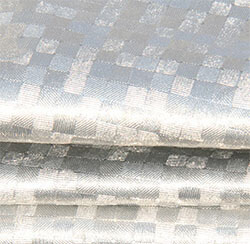
Good breathability and heat insulation properties
Good breathability in car covers helps to prevent moisture buildup, mold, and funky smells. It allows for better airflow, keeping your vehicle dry and fresh. Especially during hot summer days, car covers often have added features like aluminum foil coating or insulation layers to keep the heat out. Some covers even have ventilation holes or vents to help release heat and improve airflow, giving your vehicle extra protection from the scorching sun.
Fire retardant property
When cars are parked outdoors, it’s inevitable that there will be situations where people carelessly discard cigarette butts or children play with fireworks. Cars are highly susceptible to fire, and they are extremely sensitive to it. Choosing a car cover made with fire-resistant materials can reduce the occurrence of fires.
Generally, manufacturers add fire retardants or use fire-resistant techniques to make the cover body material a certain level of fire resistance.
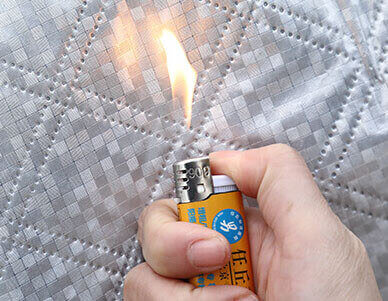
Windproof capability
The outdoor car cover should be able to withstand windy conditions, especially in environments with strong winds. It can prevent being blown away or damaged. Polyester, polyurethane, and materials with polymer coatings are commonly used for outdoor car covers due to their excellent wind resistance.
6 best materials for outdoor car body cover
PE (Polyester) car cover
PE is the most common car cover material in the market. This is a synthetic fiber. It has several advantages, including strength, durability, corrosion resistance, shape retention, good elasticity, lightweight, and more. Additionally, PE is resistant to high temperatures, protects against UV radiation, and has excellent colorfastness. Furthermore, it is relatively affordable, making it an economical car cover choice.
Note that PE has average breathability and waterproofing performance. Its waterproofing capability primarily depends on the fabric density and coating treatment. Typically, PE car covers for outdoor purposes are high-density and undergo waterproof coatings such as PU (Polyurethane) or PVC (Polyvinyl Chloride) to enhance their waterproof performance.
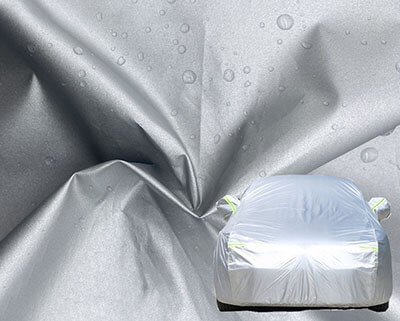
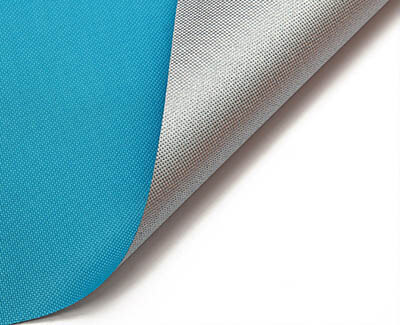
Nylon car cover
Nylon is a more durable material compared to PE, offering better resistance to scratches and tearing. The lifespan of PE car covers is around 1-2 years, whereas nylon car covers can last for 3-5 years. While nylon has slightly lower breathability than PE, both materials have good breathability and won’t have any adverse effects on the car’s surface.
Compared to PE, nylon works better in terms of waterproofing. It can achieve excellent waterproof performance through special coating treatments like PU or Teflon. PE is particularly suitable for manufacturing high-demand waterproof products such as hiking shoes or waterproof backpacks.
Additionally, nylon is slightly more expensive than PE. If you require longer-lasting protection, a nylon car cover is a good choice.
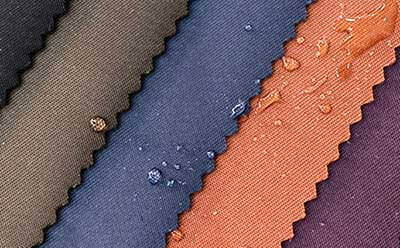
Oxford cloth car cover
Oxford cloth car covers are primarily made from nylon and PE. This material is famous for its abrasion resistance, waterproofing, sun protection, and tensile strength. Oxford cloth is a common material for outdoor sports products like tents,
Typically, this type of car body cover is breathable, and soft, without scratching the car’s paint surface. Meanwhile, it is highly durable and lightweight, easy to carry and store. Additionally, it is simple to clean and can be washed with water.
Car body covers made of Oxford cloth perform well in waterproofing, rain resistance, and snow resistance, suitable for harsh weather conditions. They effectively prevent damage to the car’s paint from UV radiation, thereby extending the vehicle’s lifespan.
It’s common to see Oxford cloth car covers with a dual-sided design. One side is a silver surface used for sun protection and heat insulation. The other side is a custom-colored surface used for dust, rain, and scratch resistance. It not only caters to the owner’s color preference but also adds a decorative effect to the vehicle.
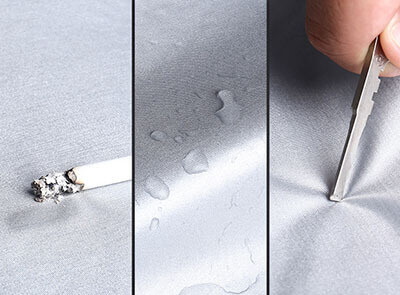
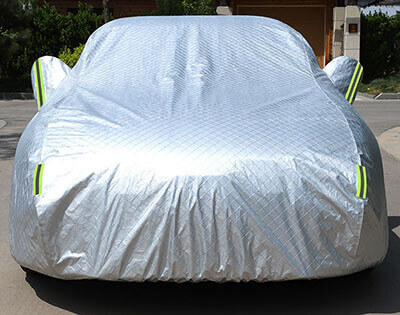
PEVA car cover
PEVA is an environmentally friendly material that offers excellent waterproofing and vapor permeability. It also exhibits good tear resistance, abrasion resistance, and UV protection. PEVA is a blend of PE (polyethylene) and EVA (ethylene-vinyl acetate), and the higher the EVA content, the greater the flexibility and toughness of the material.
In comparison to Oxford cloth car covers, PEVA is lighter and more convenient to store, place, and use. More importantly, PEVA car covers are better in terms of waterproof performance and UV protection. Additionally, PEVA car covers are more affordable than Oxford cloth covers.
If you value water resistance and UV protection and have a tight budget, go for a PEVA car cover. If durability is your priority, choose an Oxford cloth car cover. Alternatively, if you have a higher budget, consider premium options.
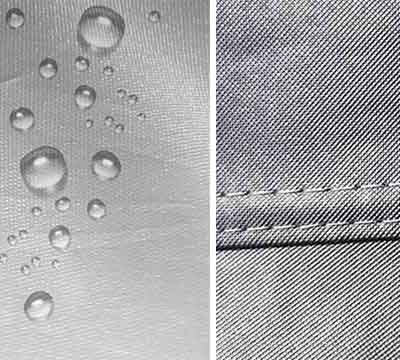
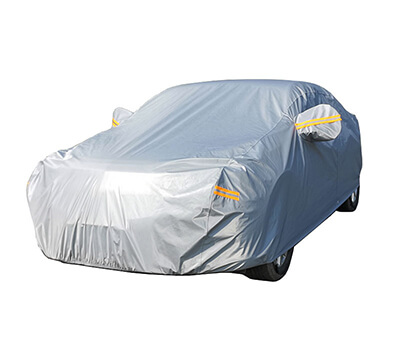
PU (Polyurethane) car cover
Car covers made of PU are more expensive compared to PEVA materials. They offer excellent durability, resistance to cold temperatures, breathability, and aging resistance. PU material is common in the production of down jackets, sweat-resistant clothing, and more. In comparison to PEVA, PU car covers provide superior waterproofing and UV protection.
The material PU is effective in preventing water and other liquids from seeping into the vehicle. Moreover. the waterproof layer created by PU provides a strong seal, offering reliable protection against water, even in harsh weather conditions. Moreover, PU has excellent UV-blocking properties. In comparison, PEVA can’t provide the same level of protection as PU car covers.
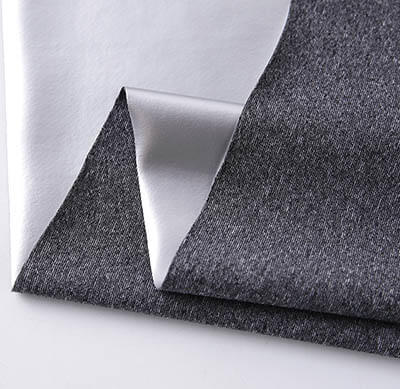
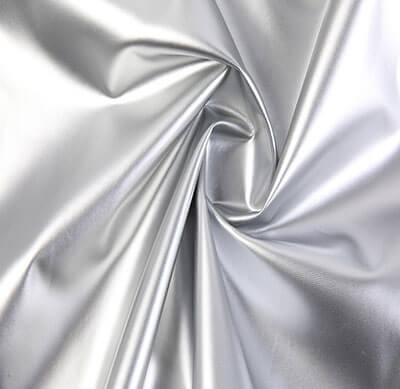
PVC car cover
We are familiar with PVC. For example, manufacturers make plastic water pipes using PVC. This material is cheap and good at waterproofing. PVC car cover can effectively protect against rain and dust.
Usually, PVC car covers are single-sided, often in silver color, and their effectiveness in sun protection and scratch resistance is moderate. The main protective feature of PVC covers is their hardness. However, they are relatively brittle and have limited protective abilities. Once scratched, they can not self-repair. The lifespan of PVC car covers is typically around 2 years.
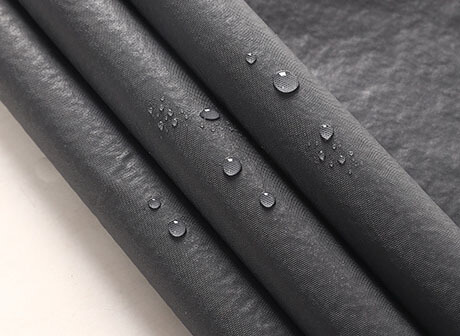
Car covers can come in single-layer, double-layer, triple-layer, or quadruple-layer designs. Single-layer car covers are typically made of PVC for waterproofing. Composite multi-layer car covers usually consist of outer materials like Oxford cloth, PEVA, PVC, PU, etc.
The inner layer can be high-density PP cotton, cotton velvet, water-spun non-woven fabric, satin or polyester satin, etc., providing effective protection against scratches. These inner layer materials are suitable for indoor car body covers to primarily prevent dust and dirt accumulation, offering some level of scratch protection and minimizing surface damage from accidental scratches or scrapes.
4 best materials for indoor car body covers
PP (Polypropylene) cotton car cover
This synthetic fabric is breathable, durable, moisture-resistant, and effective in trapping dust, dirt, and other elements on the surface of the car. If you’re looking for a lightweight, cost-effective car cover with basic waterproofing and protection capabilities, a PP car cover is a good choice. Polypropylene with PVC coating is a good fit for outdoor car covers.
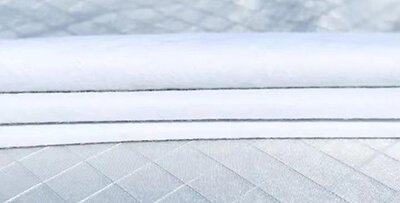
Cotton velvet/flannel
Cotton flannel is a popular fabric in the textile industry, such as dolls, blankets, and clothing linings. It is smooth, tight, absorbent, and breathable, and it is softer and more gentle than regular cotton. Cotton flannel has a soft, fine texture and is eco-friendly. Its soft texture helps minimize damage to the car’s paint when putting on or taking off the car cover. It offers good dust and scratch resistance and is reasonably priced.
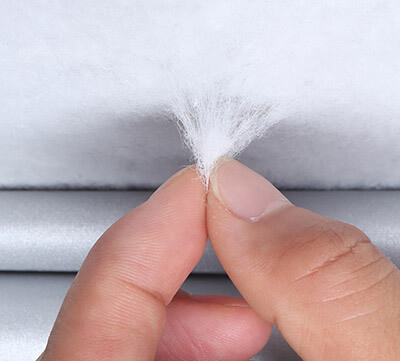
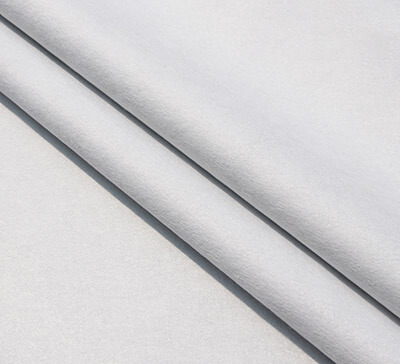
Hydroentangled non-woven fabric
Hydroentangled non-woven fabric is a common material for indoor car covers. It needs special processing techniques. And a wide range of fabrics can compose it, such as polyester, nylon, viscose fibers, Tencel, silk, bamboo fibers, and more.
It has a natural and soft appearance and is known for its durability, tear resistance, water absorption, breathability, softness, and good drape. In addition to its use in the medical industry, it is also applicable to make cosmetic cotton pads, wet wipes, masks, and other products.
Overall, this fabric-made car cover can provide basic dust protection and vehicle protection, making them suitable for long-term vehicle storage.
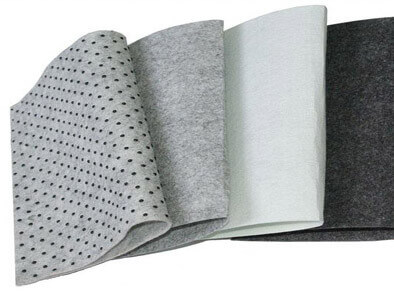
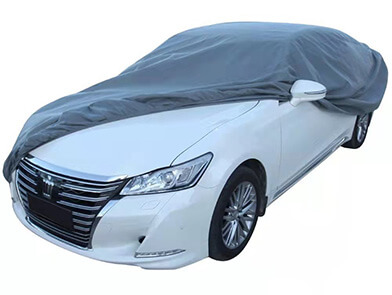
Satin or polyester satin
Satin and polyester satin are very soft and suitable for indoor car covers. They can prevent scratches, dust, and dirt. Satin car covers have a luxurious feel and decorative effect, appropriate for luxury cars. In comparison, polyester satin is typically easier to maintain, more durable, and more cost-effective than pure silk satin.
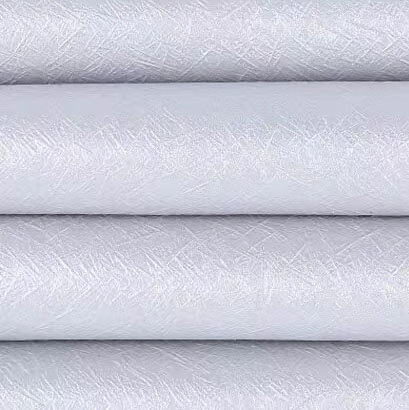
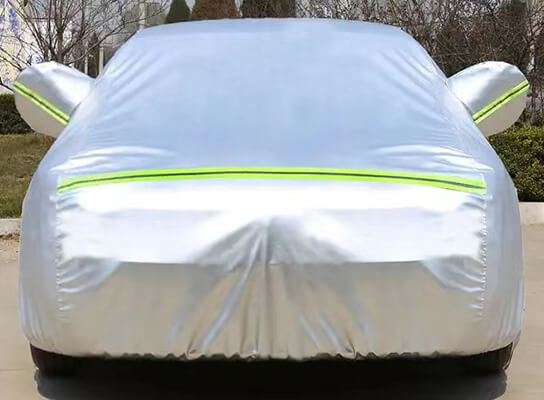
As a leading sourcing company in China, JingSourcing has integrated quality suppliers specializing in manufacturing car exterior accessories including body covers into our database.
For your custom car cover project, we can quickly find suitable suppliers for you and provide competitive quotes. We support the customization of car body covers in various materials and functions. Our professional agents will assist you in selecting the best printing methods to achieve your desired custom effects. And we follow up on production, inspect finished products and arrange shipments to your place at the best rates.


Leave A Comment